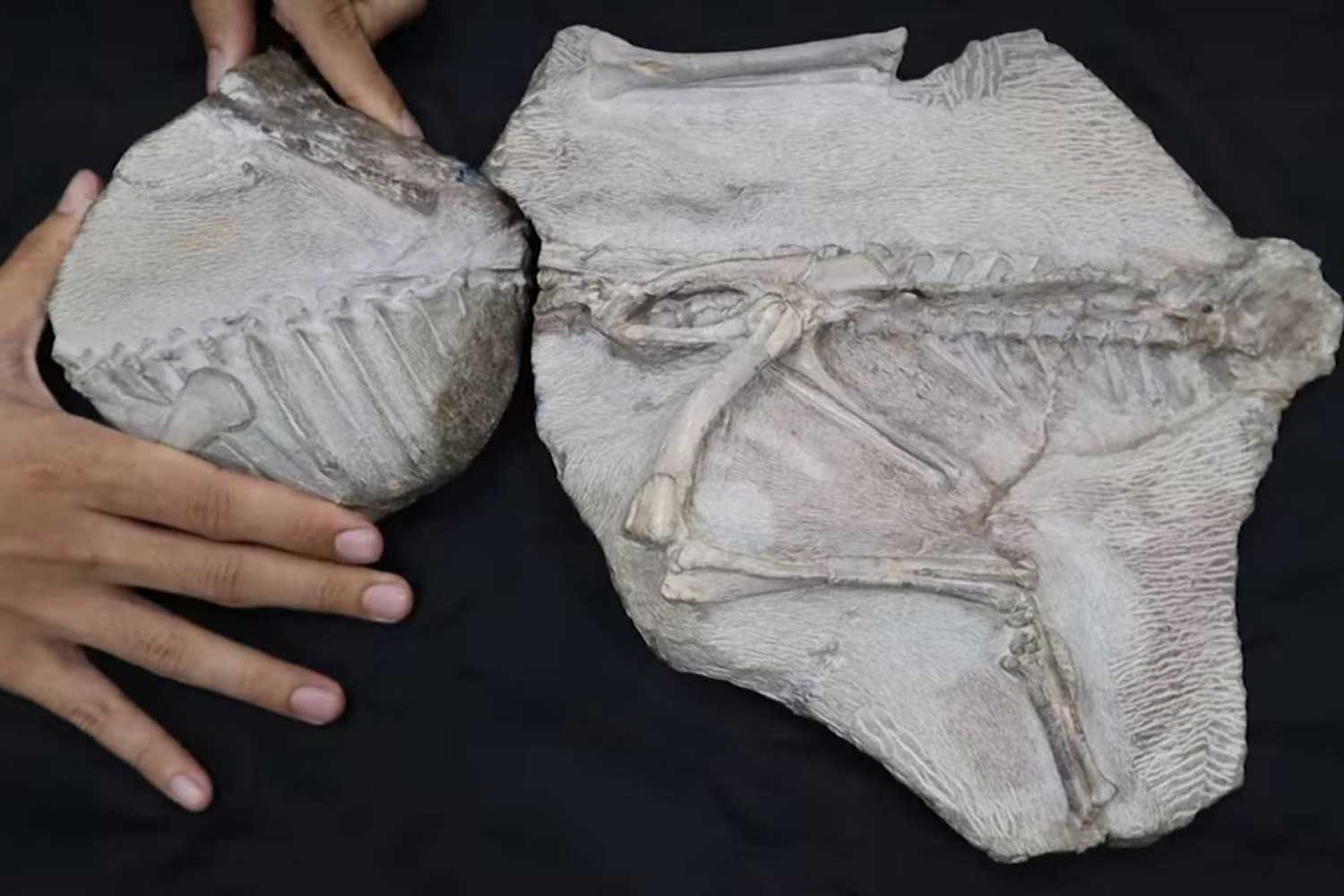Small plant-eater the eighth species to be found in ‘Thailand’s Jurassic Park’
PUBLISHED : 26 Jul 2023 at 18:41

A complete fossil of the world’s newest dinosaur discovery has been found in an area dubbed Thailand’s Jurassic Park in the northeastern province of Kalasin.
The discovery took place at the Phu Noi excavation site in tambon Din Jee of Kham Muang district in Kalasin, according to the Department of Mineral Resources and Mahasarakham University.
Oranuj Lorphensri, director-general of the department, said on Wednesday that department officials and staff from the Palaeontological Research and Education Centre of Mahasarakham University found the complete fossil of Minimocursor phunoiensis, meaning a “small runner” from Phu Noi, in the 1,200-square-metre excavation site.
The fossil is one of the most complete fossilised skeletons in Thailand and Southeast Asia.
“This fossil was kept in a way that its bones lay in order comprising the skull, the spine from the neck to the base of the tail, the left hand, pelvis, two hind legs and even spinal tendons,” Ms Oranuj said.
“It is one of the most complete dinosaur fossils in Southeast Asia.”
It is the 13th dinosaur fossil found in Thailand and the world’s newest discovered species of dinosaur, Ms Oranuj said.
The fossil dates from about 150 million years ago, which was in the late Jurassic period. Its pelvis is similar to those of birds, called ornithischian dinosaurs.
Phu Noi mountain, where the fossil was found, has been dubbed the Jurassic Park of Thailand because more than 5,000 fossilised remains of ancient creatures with backbones have been discovered there. It is the biggest and most bio-diverse site of fossilised vertebrates in Southeast Asia, Ms Oranuj said.
The small, plant-eating dinosaur was the eighth newly found species to have been found at the Phu Noi excavation site.
Sita Manitkoon, a researcher with the Palaeontological Research and Education Centre, said the fossil was estimated to belong to a 60-centimetre-tall dinosaur that weighed about 20 kilogrammes. Researchers believed that the fully grown ones might be have been about 2 metres tall.
A full report of the discovery was published on July 13 in the scientific journal Diversity.

An artist’s impression of <i>Minimocursor phunoiensis</i>. It is believed that adults of the species grew to be about 2 metres tall.

